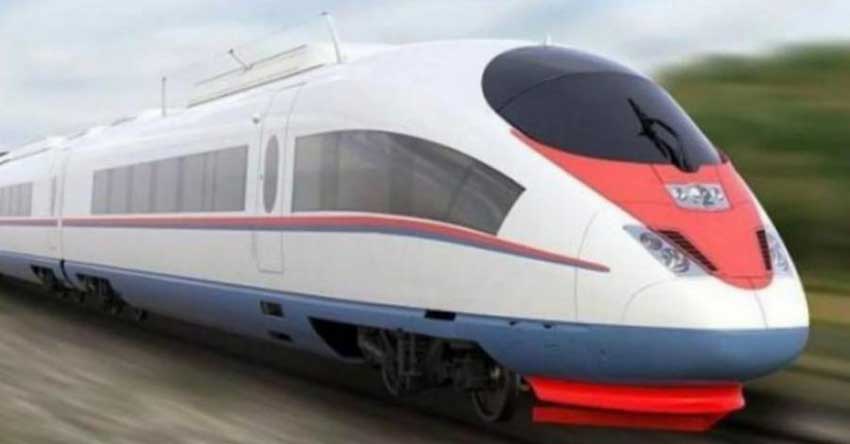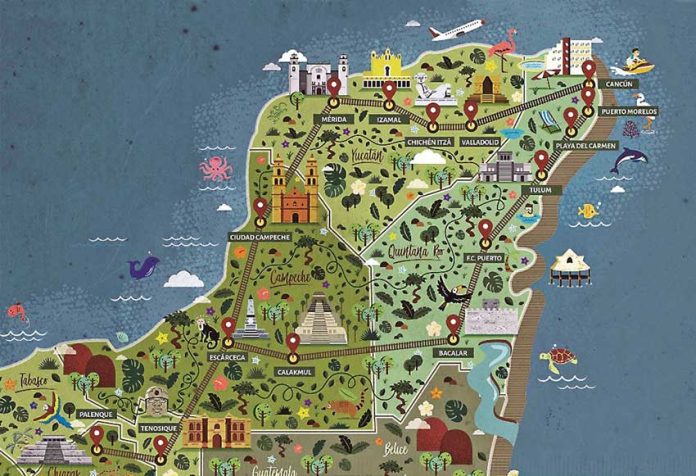The Maya Train project could end up costing more than 10 times the amount estimated by the federal government, according to a Mexican think tank.
The Mexican Institute for Competitiveness (Imco) estimated in a technical report that “if planning is not optimal,” it will cost between 479.9 billion pesos (US $25.5 billion) and just under 1.6 trillion pesos (US $85 billion) to build the Yucatán peninsula rail project.
The government estimates that its signature infrastructure project will cost between 120 and 150 billion pesos (US $6.4 to $8 billion).
The Imco report was based on an analysis of 23 rail projects in a range of countries as well as the incomplete Mexico City-Toluca passenger train.
Ana Thais, an Imco researcher and the author of the report, said the cost of the Maya Train is likely to be much higher than anticipated due to expenses associated with obtaining rights of way.
She explained that the government has already acquired the rights for some of the proposed route, including sections where tracks already exist.
However, Thais added that it still needs to secure rights of way for more than half the proposed route, or around 900 kilometers, and some sections of track will likely have to go through ejidos, or communal lands.
The government has faced stiff opposition and legal action from communal landowners when trying to obtain rights of ways for other infrastructure projects such as the Mexico City-Toluca train.
Thais also contended in her report that the viability of the railroad is compromised because of the low population in many of the areas through which it will pass.
“If you have very few people around the stations, it’s very likely that few people will use the train and if very few people use it, it won’t generate enough profits to cover investment costs and ensure that the train can operate using its profits and not through a government subsidy,” Thais said.
She added that the train has to find a way to attract as many passengers as possible and expressed doubt that tourists alone would be able to fill it and make it economically viable.

In addition to warning of the potential for a huge cost overrun, the report also highlighted another possible economic danger.
“The worst-case scenario would be one in which the construction of the Maya Train doesn’t meet the objective of providing comprehensive growth and development to the communities through which it will pass, and the federal government ends up subsidizing with taxpayers’ resources another project that benefits no one,” it said.
To avoid such a scenario, Imco proposed incorporating activities other than tourism in the plans for the train.
The report contended that a second track could be built – “one solely for freight and one solely for passengers.”
However, Thais recognized that would have two consequences: the cost of construction would go up and the impact on the environment would be greater.
“You’re no longer talking about needing 15 meters for construction . . . [with] two tracks you maybe need 50 meters in addition to the space between the two tracks,” she said.
In light of the concerns it raised, Imco also recommended consulting regularly with residents who will be affected by the project, building the rail line so that it passes through populated areas and obtaining all rights of way before work starts.
President López Obrador today rejected Imco’s view that the cost of the project would increase, contending that the government would actually save money as a result of the rights of way it has already obtained.
He remains adamant that the project will act as a trigger for economic and social development in Mexico’s southeast.
A public consultation before the government took office found almost 90% support for the project despite environmental concerns and claims from indigenous communities that they hadn’t been consulted.
In December, experts warned that the 1,500-kilometer railroad, which will link cities in the three Yucatán peninsula states as well as Tabasco and Chiapas, poses environmental risks to the region’s underground water networks and the long-term survival of the jaguar.
Source: El Financiero (sp), Milenio (sp)
